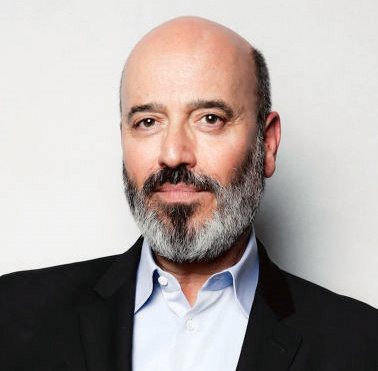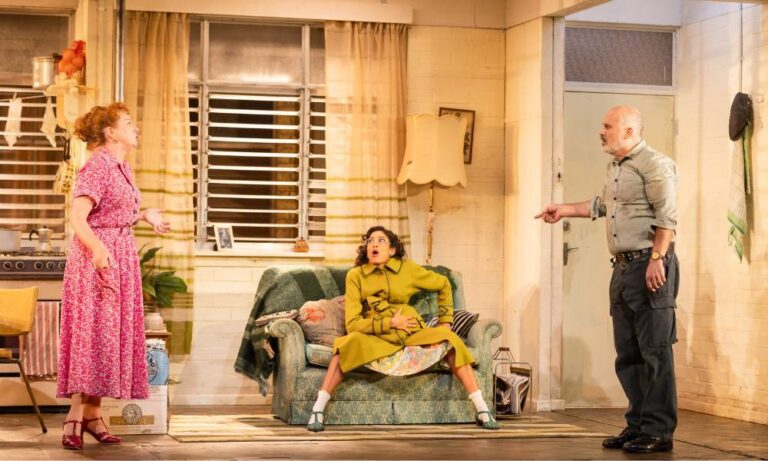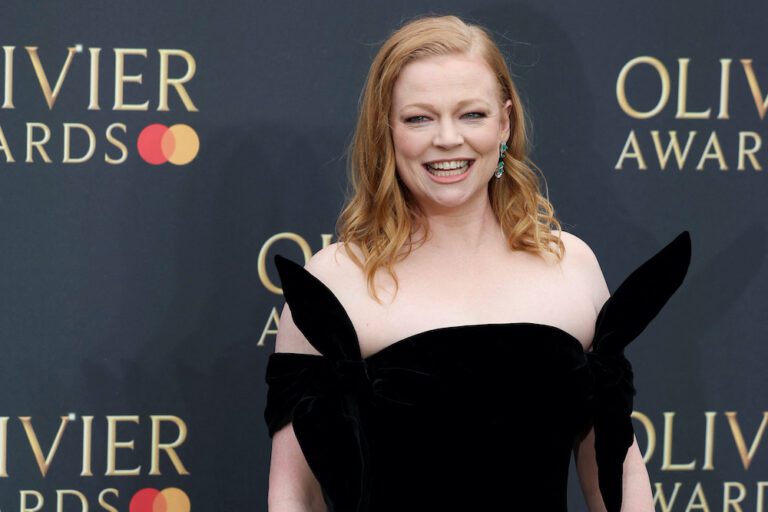What was the most important aspect in creating these remarkable costumes?
I think it was working within the fine line of the clothing being present and admirable and well designed, without upstaging the love story, without being too forefront. And I think I was very successful. I was happy with how it came out as far as the beautiful backdrop – it never takes away from their relationship. And then also getting the period right and making it believable, in creating that world of 1955 London.
If the Reynolds Woodcock label was nonfiction, which label by a contemporary designer most resembles this work?
That’s very interesting. It’s hard to say only because the sensibilities have changed so much and, actually, I consider at the time, in 1955, that some of Woodcock’s sensibilities were almost out of style. He talks about his mother teaching him the trade, and so that would have been turn of the century. And I think a lot of his fabric choices reflect that. There are velvets, satin and laces, and there’s no-one today who is really doing those kinds of fabrications with a riff on history in the way that he was doing his thing at the time. That sensibility is gone today.
Do you think that dress ‘sensibility’ is something we are lacking now?
I do, actually. I live in Los Angeles and I am always kind of shocked about how people are not dressed up. Especially when I went and lived in London for six months on this film, and I went and visited London for Jason Bourne when I worked on that. Granted, there are different climates, but just the casualness of today’s daily life, I mourn the loss of fine dressing or the attention to the dressings and fabrics and styles that was in 1955. I think LA is really the only city where you can actually go shopping in your pyjamas. I looked at a woman yesterday who was texting on her phone and I thought to myself, ‘Are you in your nightgown?’
In the movie, Daniel Day-Lewis (Woodcock) looks like he is doing all the right things … in terms of how he lays out the dress, etc. How did he manage this so well?
It’s funny you should ask, because I was so impressed by that, how much he got that right, especially when he is creating with Alma the first time up in the country house. Even from looking over the glasses to looking in the reflection in the mirror to see what we see rather than looking at it. Everything about it was so right and so well observed and just felt really true to me. But he did an enormous amount of work to prepare himself and worked on learning how to cut. He observed a shop in New York and created a garment and a day dress. So he came really prepared to make it real and believable, and I think he was really successful.
What was your favourite outfit?
Well, I have a few, but I do think my favourite with how it came out was the antique lace dress, the lavender one (pictured below). It’s 17th-century lace and he makes it for Alma for the photo shoot. And there is a lot going on there, which is why I love it. One of the things that is extraordinary about the lace is that we were able to find it. The fabric has some kind of magic to it and was something special. And then the beautiful colour; I had Daniel choose the colour – I gave him the fabrics and I said: ‘Pick which colour you think would be good for this lace dress.’ And, of course, he picked that beautiful lilac. So, we took it away and we figured out, one piece is three metres and 18-inch wide lace, so we Xeroxed the whole thing and laid out how we were going to cut it along the form. And it just came out really breathtaking in person.
So it was a true collaboration, if Daniel picked out the colour and you worked with that?
Absolutely. And he’s got this great taste, but he is always making these decisions in sort of the character’s mindset I think, and there’s nothing random or accident about it, a lot of it is intuition. If I give him a swatch and I say, ‘Why don’t you pick the colour’, he’s considering it deeply, he is considering it as Woodcock would do it. And it is emotional. And then we would go off and figure out how to best make the dress.
What was the most challenging aspect of your work on the film?
Part of it was finding fabric that really felt like the period. We made almost 15 different garments for the film and finding the fabrics that were believable for the period became more and more difficult. And then also just making sure of the integrity of the couture. We kept up a level of quality because we were taking this all the way through the shoot, and we were making dresses all the time, almost until the shoot.
Would you describe this film as one of the highlights in your career?
Absolutely. It’s wonderful to work in London and it’s a wonderful story, and it’s my eighth feature with Paul [Thomas Anderson]. I loved working with Daniel. The reception we are getting for the final product I feel is really amazing. If you could count on one hand the high points in my career, Phantom Thread would be no doubt.








